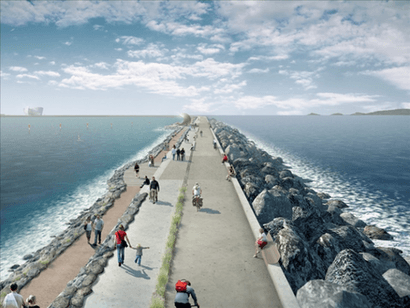
The project, which will consist of a series of turbines in the six-mile, horseshoe-shaped sea wall around Swansea Bay in Wales, will be able to generate 500 gigawatt hours (GWh) per year of low carbon electricity.
The contract is still subject to Contract for Difference (CfD) negotiations in which the affordability of the project will be discussed and its value for money assessed. This process is completely separate from that related to development consent. A CfD offered to the project would subsequently be subject to strict value for money considerations and to State aid approval.
“We need more clean and home-grown sources of energy, which will help to reduce our reliance on foreign fossil fuels” said Lord Bourne, Energy and Climate Change and Wales Office Minister. “Low carbon energy projects like the tidal lagoon in Swansea Bay could bring investment, support local jobs and help contribute to the Welsh economy and Swansea area.”
Mark Shorrock, chief executive of Tidal Lagoon Swansea Bay Plc, added that with a 120 year life and zero carbon energy infrastructure, the project has the potential to help transform the UK’s industrial economy and energy mix. It will also enable Wales to lead the next industrial revolution aimed at decarbonising the world in time to avoid two degrees of global warming. Across Wales companies are now busy working in the supply chain to prepare for the delivery of the project. The company also sees it as paving the way for a fleet of lagoons that can work in harmony with nature to help secure the nation's electricity for generations to come. Additionally, it will create the opportunity for the local community to become part owners later in the year.
DECC announced in December 2014 that it was starting to explore the potential for a tidal lagoon programme in order to help meet the UK’s green energy requirements. The start of the first phase of negotiations regarding a potential Contract for Difference with Tidal Lagoon Power Ltd, the developer of Swansea Bay Tidal Lagoon, were announced by the previous government in March 2015.
A potential construction date for the project is scheduled for next year.
For additional information:

